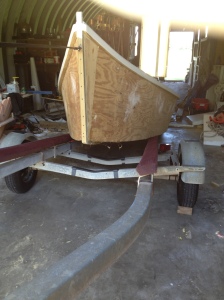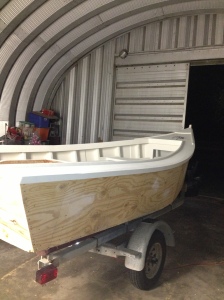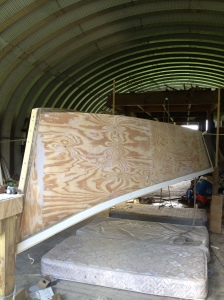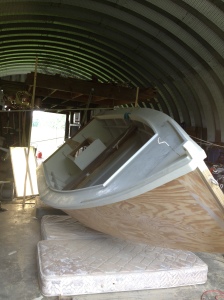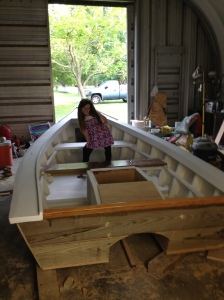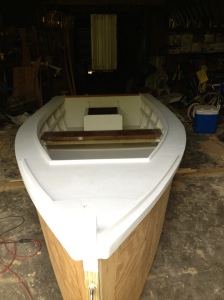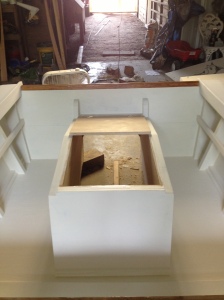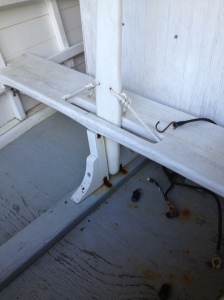The holiday season from Halloween to Christmas kind of sneaked up on me and put progress on the boat to all but a halt. I did manage to do a few things though.
I finished the old timey![IMG_0388[1]](https://1boatlover.files.wordpress.com/2013/12/img_03881.jpg?w=225&h=300) stick steering handle which I made from oak with stainless bolts and washers. The rope was attached in holes on the stick and ran through a series of stainless and brass pulleys. Then it was attached to eyebolts in the motor by stainless springs. I then made a cover over the notched hole in the seat made to fit the handle.
stick steering handle which I made from oak with stainless bolts and washers. The rope was attached in holes on the stick and ran through a series of stainless and brass pulleys. Then it was attached to eyebolts in the motor by stainless springs. I then made a cover over the notched hole in the seat made to fit the handle.
I mounted 2 evebolts to the seat on the passenger side bottom and used a pulley strap to secure the battery box to the bottom of the seat. After that, I ran the wiring for the switch panel from the battery with #8 copper. I ran all the associated wiring to the perspective locations and also wired in a lowrance fish finder mounted to the seat in front. I also refinished the motor control, painted it, and mounted it and the cables beside the driver seat.
I painted the bottom of the floor in light blue(so it won’t get hot and to cut glare) with grit added to make it nonskid. I left the 1″ edge between the sides and floor the original paint so water could flow easily without getting ponded in the corner and holding because of the non slip. I also put the finish coat on the entire outside of the boat.
I built and painted the door for the cabin and the splashwell where the motor is. I then mounted the cabin door with a stainless piano hinge and the splash door with stainless door hinges. I got these at Lowes and you wouldn’t believe how much cheaper they were compared to a boating store.
I took 1″ aluminum square tubing and mounted 2 on each side of the motorwell. I attached them to the 2×2 strips with 3/8″ screws. Each bar has a eyebolt on each end. This will be used to mount the (2) 6 gallon fuel tanks and have them secured off the floor. The eyebolts are for bungy straps to hold the tanks in place.
I took the motor cover and hand painted the johnson logo on each side. I then added a red and a black stripe to finish it off. Not the best i’ve seen but it was by hand.
Finally I did do some things to the trailer to make it load a little easier. I added a taller winch post, added some bigger rollers, and repaired the trailer jack.
At the start of this post, I said I hadn’t done much. After looking at the list of what I did, I actually got more done than I thought. I’m on the homestreatch now, so hopefully I will be finished over the next few weeks . .![IMG_0395[1]](https://1boatlover.files.wordpress.com/2013/12/img_03951.jpg?w=225&h=300)
![IMG_0408[1]](https://1boatlover.files.wordpress.com/2013/12/img_04081.jpg?w=225&h=300)
![IMG_0439[1]](https://1boatlover.files.wordpress.com/2013/12/img_04391.jpg?w=225&h=300)
![IMG_0438[1]](https://1boatlover.files.wordpress.com/2013/12/img_04381.jpg?w=225&h=300)
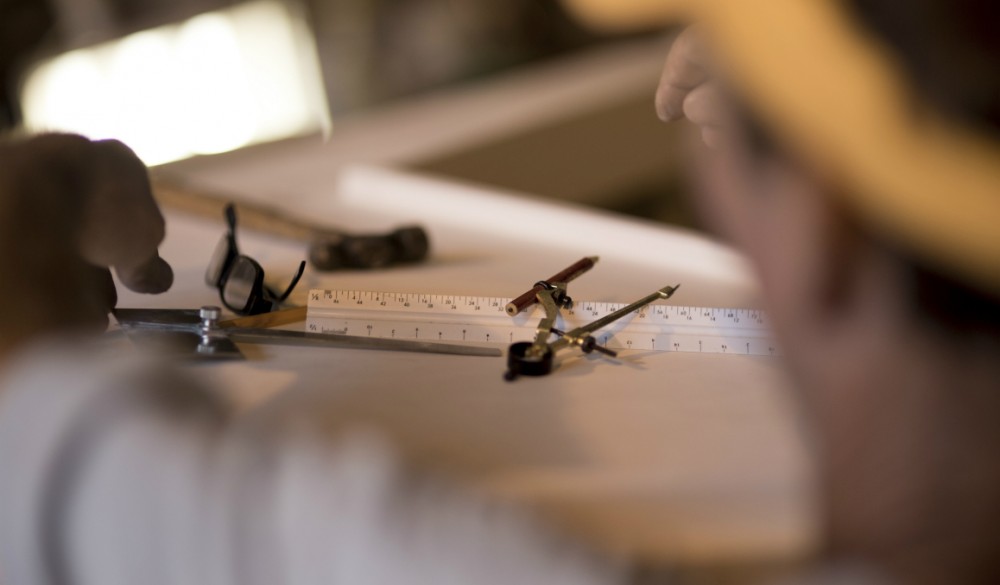
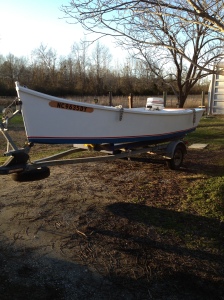
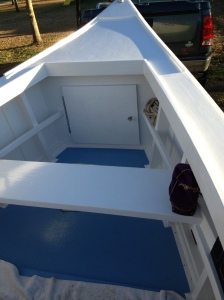
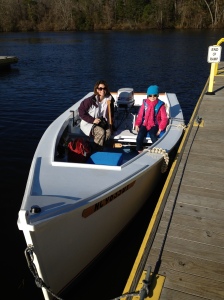
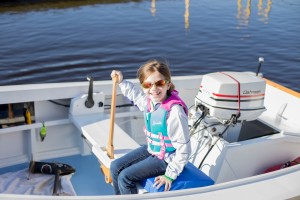
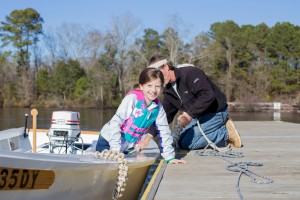
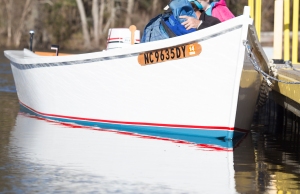
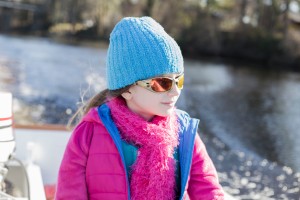
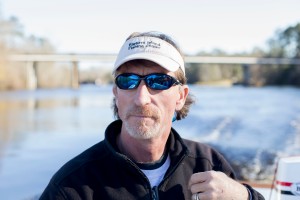
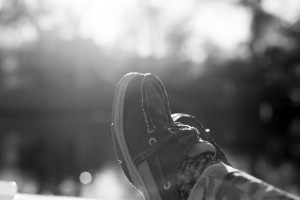
![IMG_0388[1]](https://1boatlover.files.wordpress.com/2013/12/img_03881.jpg?w=225&h=300)
![IMG_0395[1]](https://1boatlover.files.wordpress.com/2013/12/img_03951.jpg?w=225&h=300)
![IMG_0408[1]](https://1boatlover.files.wordpress.com/2013/12/img_04081.jpg?w=225&h=300)
![IMG_0439[1]](https://1boatlover.files.wordpress.com/2013/12/img_04391.jpg?w=225&h=300)
![IMG_0438[1]](https://1boatlover.files.wordpress.com/2013/12/img_04381.jpg?w=225&h=300)
![IMG_0341[1]](https://1boatlover.files.wordpress.com/2013/10/img_03411.jpg?w=225&h=300)
![IMG_0344[1]](https://1boatlover.files.wordpress.com/2013/10/img_03441.jpg?w=225&h=300)
![IMG_0345[1]](https://1boatlover.files.wordpress.com/2013/10/img_03451.jpg?w=225&h=300)
![IMG_0347[1]](https://1boatlover.files.wordpress.com/2013/10/img_03471.jpg?w=225&h=300)
![IMG_0348[1]](https://1boatlover.files.wordpress.com/2013/10/img_03481.jpg?w=225&h=300)
![IMG_0352[1]](https://1boatlover.files.wordpress.com/2013/10/img_03521.jpg?w=225&h=300)
![IMG_0303[1]](https://1boatlover.files.wordpress.com/2013/10/img_03031.jpg?w=225&h=300)
![IMG_0316[1]](https://1boatlover.files.wordpress.com/2013/10/img_03161.jpg?w=225&h=300)
![IMG_0315[1]](https://1boatlover.files.wordpress.com/2013/10/img_03151.jpg?w=225&h=300)
![IMG_0338[1]](https://1boatlover.files.wordpress.com/2013/10/img_03381.jpg?w=225&h=300)
![IMG_0295[1]](https://1boatlover.files.wordpress.com/2013/10/img_02951.jpg?w=225&h=300)
![IMG_0296[1]](https://1boatlover.files.wordpress.com/2013/10/img_02961.jpg?w=225&h=300)
![IMG_0298[1]](https://1boatlover.files.wordpress.com/2013/10/img_02981.jpg?w=225&h=300)
![IMG_0301[1]](https://1boatlover.files.wordpress.com/2013/10/img_03011.jpg?w=225&h=300)
![IMG_0265[1]](https://1boatlover.files.wordpress.com/2013/10/img_02651.jpg?w=225&h=300)
![IMG_0269[1]](https://1boatlover.files.wordpress.com/2013/10/img_02691.jpg?w=225&h=300)
![IMG_0287[1]](https://1boatlover.files.wordpress.com/2013/10/img_02871.jpg?w=225&h=300)
![IMG_0288[1]](https://1boatlover.files.wordpress.com/2013/10/img_02881.jpg?w=225&h=300)
![IMG_0216[1]](https://1boatlover.files.wordpress.com/2013/10/img_02161.jpg?w=225&h=300)
![IMG_0218[1]](https://1boatlover.files.wordpress.com/2013/10/img_02181.jpg?w=225&h=300)
![IMG_0219[1]](https://1boatlover.files.wordpress.com/2013/10/img_02191.jpg?w=300&h=225)
![IMG_0220[1]](https://1boatlover.files.wordpress.com/2013/10/img_02201.jpg?w=225&h=300)
![IMG_0251[1]](https://1boatlover.files.wordpress.com/2013/10/img_02511.jpg?w=225&h=300)
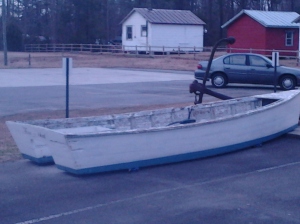
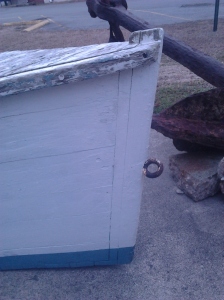
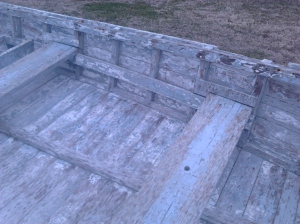
![IMG_0056[1]](https://1boatlover.files.wordpress.com/2013/09/img_00561.jpg?w=225&h=300)
